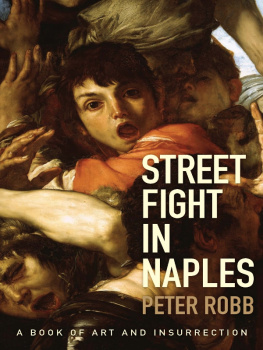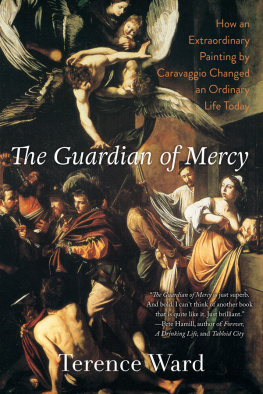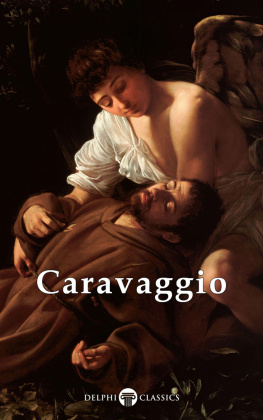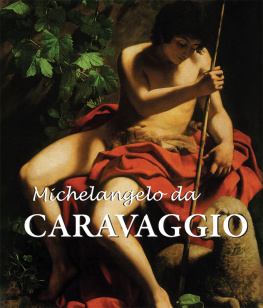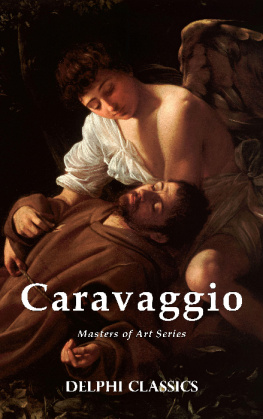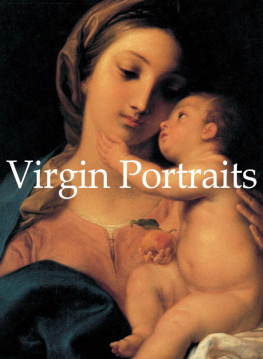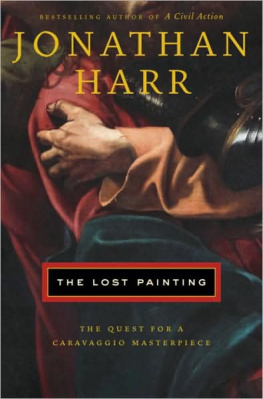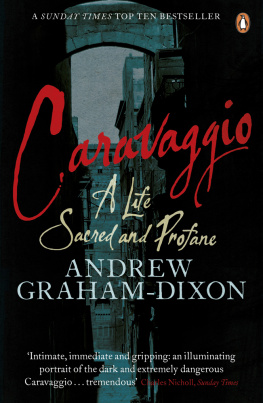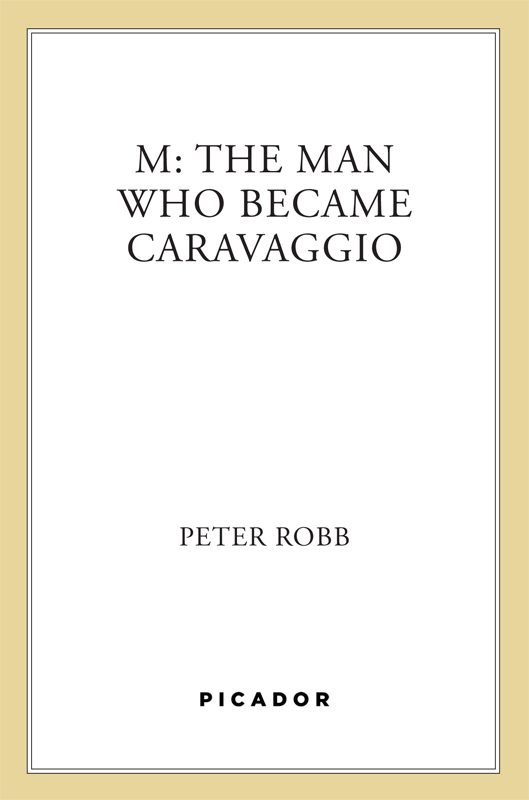Contents
Guide

The author and publisher have provided this e-book to you for your personal use only. You may not make this e-book publicly available in any way. Copyright infringement is against the law. If you believe the copy of this e-book you are reading infringes on the authors copyright, please notify the publisher at: us.macmillanusa.com/piracy.
CONTENTS
I.M.
Murray Grnwall
marquera chaque soire de son art personnel, piquant
et concis, un peu acide, excentrique, frlant lgrement le
clownesque et un charme pittoresque un peu la Daumier,
comme une posie exotique de mime et de mezzo, mais
toujours linterpretation du rle tait rigoureuse
acteur dun art si riche et si prsent, si habit
Michel Cournot
Le Monde
Young boys take no care, and never
finish off their things with shadows.
Leonardo
We can only describe and say,
human life is like that.
Wittgenstein
Crime was my oyster.
Weegee
THE FRAGMENTS that tell us what we know about the life and death of the painter I call M float on the surface of a treacherous reality theyre lies to the police, reticence in court, extorted confessions, forced denunciations, revengeful memoirs, self-justifying hindsight, unquestioned hearsay, diplomatic urbanities, theocratic diktat, reported gossip, threat and propaganda, angry outbursts hardly a word untainted by fear, ignorance, malice or self interest. You have to apply a forensic and skeptical mind to the enigmas of Ms life and death. You have to know how to read the evidence. You have to know the evidence is there you need a feel for the unsaid, for the missing file, the cancelled entry, the tacit conclusion, the gap, the silence, the business done with a nod and a wink. The missing data in Ms life and death make up a narrative of their own, running invisible but present through the known facts.
Ms career was marked out by crimes. Convention has it they were his. I read the record differently and see him largely as the victim of powerful interests hed offended. I see his death as murder. I turned from the records of a recent Italian past and found M living in a remote but strange world of parallel powers and crimes of state. I dont pretend to have solved or even fully articulated the problems of Ms fate in this book, but I hope that after reading it people may feel that M is a lot more serious than the libel of the criminal genius allows, and that questions about what happened to him need answers. And I hope the book will leave readers dissatisfied with the exquisitely academic orthodoxy that Ms life was, like his art, basically orthodox. The wildnesses of Ms life werent accidental but were intrinsic to the way he painted. The writer on M whod known him best, his most disinterested contemporary biographer, remarked of Ms art that maybe thats why the poor guy had so much trouble during his life.
Roberto Longhi, who did more than anyone to drag Ms art back into view, liked to call paintings the primary documents in art history Longhi said that unlike archival documents, the critics response to the art was the only thing that couldnt be faked. Ms paintings are works of his time and for our own, and looking at them long and hard again has been my own primary research, along with retracing the trajectory of his life. The documentary part pieces together the findings of long years of research by many people, whose names are found in the list of sources at the end. M is implicitly a report on a great and unfinished collective work of rediscovery. Not that the people who found the documents and identified and dated the canvases would likely share its conclusions. Not that the researchers agree now among themselves, or ever did. Mine is a working hypothesis, a preliminary outline. Though the text is littered with weasel qualifiers, the scrupulous may still find here that likelihood hardens too quickly into certainty if it werent so, the narrative would sink under the weight of discussions of the evidence. Conclusions I think are dry enough. Theres no romancing.
I owe particular thanks to the recent discoverers who kindly talked with me about what theyd found John Azzopardi, Fiora Bellini, Maurizio Calvesi, Sandro Corradini, Maurizio Marini, Vincenzo Pacelli. Thanks for their kindness to Pino Bianco, Marco Ciatti, Mario Croce and Princess Odescalchi. For help with books to Enzo Bisso, Lady Drysdale, Rosario Wrzburger. Helen Langdon has kindly pointed out two errors of detail that came from quoting corrupt transcriptions. These have been corrected from the original Australian edition of this book, whose publishers, Michael Duffy and Alex Snellgrove, and their staff Gail MacCallum, I deeply thank. I love working with people who know a wing and a prayer is the way to fly. Thanks to Rosemary Davidson and Jack Macrae for joining the wild ride in London and New York and for not falling off. And thanks to Michael Cilia, aged ten, who got the ladder and took me down into the guva and did not fear.
M ? M WAS A PAINTER. This is a book about him. His usual name was Michelangelo Merisi. The first published account of his life, though and it was by a contemporary whod known him called him Amerigi. The second called him Merigi. And when he was one year old and five years old his fathers name was recorded as Merici and then Morisi. The painter himself was named as Merisio in Roman court documents and Morigi in another written the year before he died. The further vagaries of the written tongue transmuted him variously into Morisius, Amarigi, Marigi, Marisi, Narigi, Moriggia, Marresi and Amerighi. M himself signed his name Marisi.
Friends uncertain of the surname just called him Michelangelo, or Michele or Michelagnolo, and people who felt uncertain about that as well or who simply knew him less intimately called him generically after the small town of Caravaggio in the province of Bergamo, just east of Milan where he almost certainly wasnt born but where he spent part of his childhood and where his parents families came from. M was most likely born in Milan and that was where he learnt to paint. He was born in 1571, although his friends thought he was born in 1573 and indeed so did everyone until recently, on account of Ms adjusting his age to make himself a couple of years younger when he went to Rome. Genius was more appreciated in youth and M in Rome was almost a late starter, still unknown when other painters his own age were at the top of the heap and employing him in assembly line work. He died in 1610 in an unidentified location, probably on July 18. M didnt so much die as go missing. He disappeared and his body was never found. No one witnessed his death. Or those who did werent talking.
His fifteen surnames and the dates and places of his birth and death werent the only uncertainties about Ms life. A lot of what happened between those extremities was no less uncertain. Whats known today derives largely from the memories of two contemporaries writing a couple of decades after the events they recalled, ten years or so after M had died. Artists lives, in those days, were brief. Often in the living, always in the writing. A painters life was about as long as a whos who entry or a note in a tourist guidebook. This was what artists recorded lives mostly were, chronological lists of works with a note on technique or the odd illustrative anecdote thrown in. The most intelligent and ambitious of these assemblages Vasaris in the mid sixteenth century and Belloris a hundred years later elaborated an idea of painting that each artists career was used to illustrate. Neither the individual artists inner life nor the minutiae of his social existence the staples of modern biography was felt worth retailing to anyone interested in the work.


